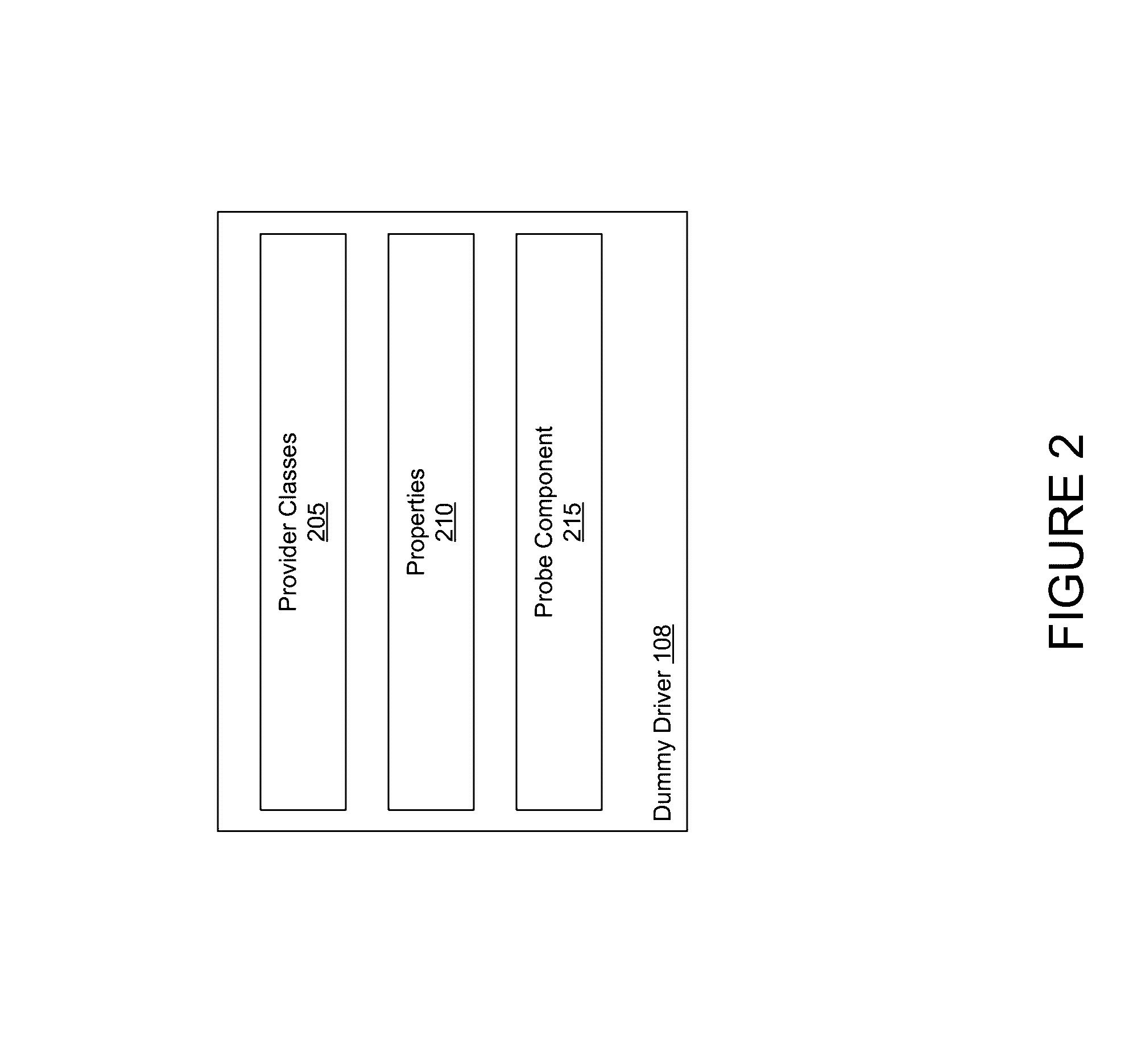Policy-driven device control in operating systems
a technology of operating system and policy, applied in the direction of internal/peripheral component protection, etc., can solve the problems of mac os x, difficult blocking access to devices, and no device control manager provided
- Summary
- Abstract
- Description
- Claims
- Application Information
AI Technical Summary
Benefits of technology
Problems solved by technology
Method used
Image
Examples
Embodiment Construction
[0018]Embodiments presented herein describe techniques for controlling device access to a computing system having an operating system that does not include a device manager.
[0019]A device driver controls access between an application and a device. Typically, when a device is attached to the computing system, the OS identifies drivers having a provider class corresponding to a bus to which the device is attached (e.g., USB, PCI, Firewire, Thunderbolt, etc.). The OS then identifies drivers which have properties matching the device. Examples of properties include such as vendor ID, max read timeout, max write rate, and the like. The OS then requests each identified driver to temporarily probe the device and generate a score based on the probe. A high score indicates a strength of the driver in communicating with the device, e.g., a confidence of how suitable the driver is for the device. The OS ranks the drivers by probe score and maps the driver having the highest score to the device....
PUM
 Login to View More
Login to View More Abstract
Description
Claims
Application Information
 Login to View More
Login to View More - R&D
- Intellectual Property
- Life Sciences
- Materials
- Tech Scout
- Unparalleled Data Quality
- Higher Quality Content
- 60% Fewer Hallucinations
Browse by: Latest US Patents, China's latest patents, Technical Efficacy Thesaurus, Application Domain, Technology Topic, Popular Technical Reports.
© 2025 PatSnap. All rights reserved.Legal|Privacy policy|Modern Slavery Act Transparency Statement|Sitemap|About US| Contact US: help@patsnap.com



